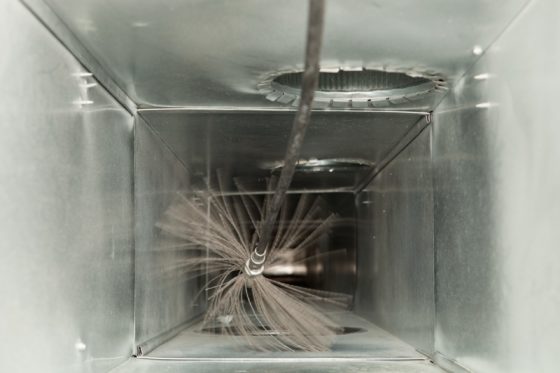Comprehensive air duct cleaning services go beyond basic cleaning to include important testing and inspection steps. Evaluating indoor air quality, checking for leaks and assessing system airflow helps identify any other HVAC repairs or improvements needed to ensure peak duct performance.
Testing Indoor Air Quality
Professional duct cleaners typically test indoor air quality before and after duct cleaning using specialized equipment. This involves measuring:
- Particle counts: The amount of dust, allergen and pollutant particles suspended in indoor air. Higher counts mean worse air quality.
- Volatile organic compounds: Gases emitted by materials like cleaning products, paints and furnishings that can cause health issues in high concentrations.
- Carbon dioxide levels: An indicator of adequate ventilation and oxygen in indoor spaces.
By checking these factors before and after cleaning ducts, technicians can determine the true impact on air quality and whether any additional remediation may be required.
Inspecting Ducts for Physical Damage and Leaks
While inspecting air ducts for buildup and contamination, professionals also check for:
- Physical damage: Ducts can deteriorate over time due to age, moisture, pests and other issues. Repairs or partial replacement may be needed.
- Leaks: Gaps or holes in ducts allow conditioned air to escape before reaching rooms. This wastes energy and reduces system efficiency. Any leaks identified should be sealed.
- Insulation degradation: Duct insulation keeps air at the proper temperature but can degrade over time, reducing system performance. Re-insulating may improve comfort and efficiency.
Assessing System Airflow
Airflow tests evaluate whether air is properly distributed to different rooms served by the HVAC system. Issues with balancing or blockages can result in:
- Uneven temperatures: Some rooms feel too hot or cold due to inadequate airflow.
- Poor filtration effectiveness: Without proper airflow, filters cannot trap particles and contaminants as designed.
- Higher utility bills: Systems must work harder when airflow is improper, increasing energy costs.
Testing pressures and airflow rates can reveal any airflow issues. Adjusting dampers, registers and other components can restore optimal performance.
In summary, comprehensive duct inspection and testing identify a range of potential HVAC problems beyond simple cleaning. By evaluating air quality, detecting physical issues and assessing airflow, professionals gain insight into additional repairs or upgrades needed to fully optimize system efficiency, indoor comfort and air quality. Combining testing with duct cleaning creates a holistic “wellness checkup” for any home’s HVAC system.

